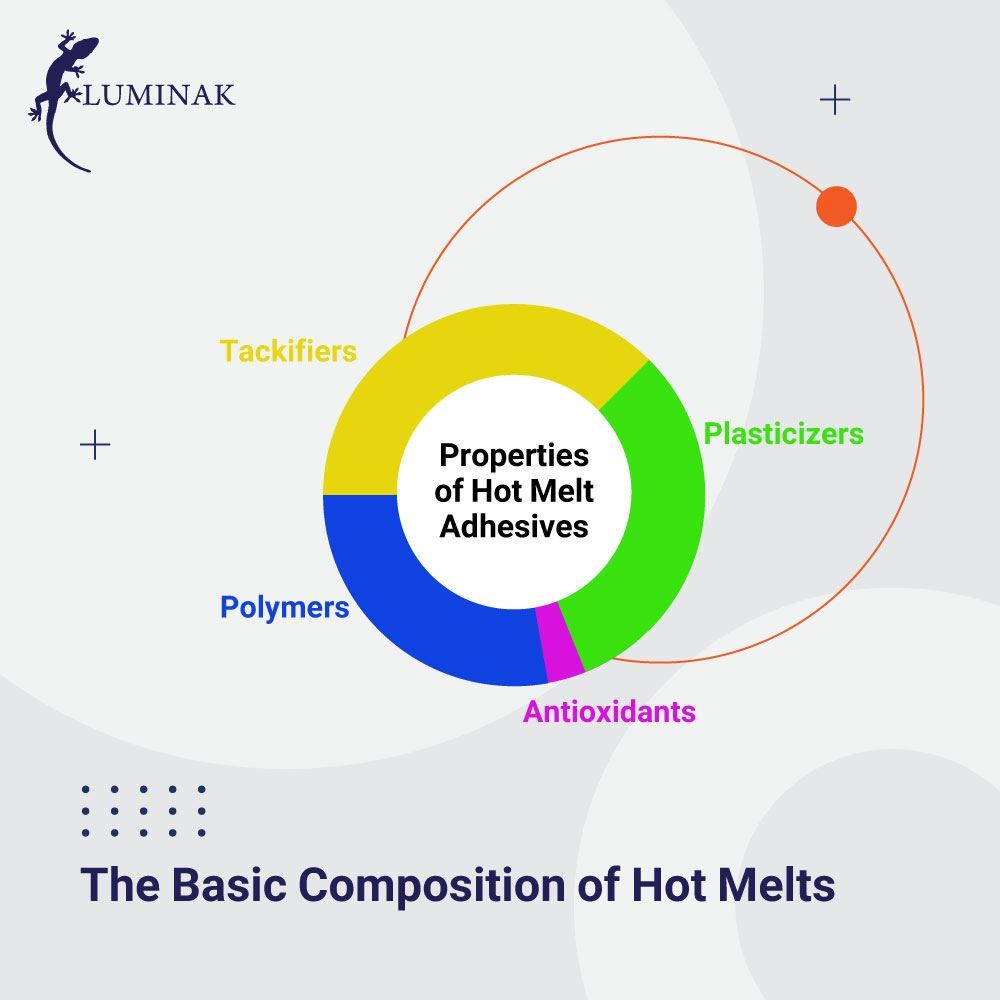Hot melt adhesives have been used in binderies and print houses for years. A variety of hot melts are available in the marketplace, and product selection is highly dependent on intended end-use, manufacturing processes, and application equipment. Pressure-sensitive adhesives (PSAs) and ethylene-vinyl acetate adhesives (EVAs) are the two hot melt chemistries most commonly used in Bookbinding. Although they differ in physical properties and performance characteristics, the composition of these two systems bear some similarities.
Some hot melt adhesive formulas are very simple and some are extremely complex, but they all typically have four types of ingredients in common: polymers, plasticizers, tackifiers, and antioxidants.
Each of these ingredient classes brings something unique and important to the overall formula. Within each class, there are hundreds of different choices that can be used or combined to give the final product a specific set of attributes.
Below are summaries that illustrate why each of the four main classes of components is an integral part of an adhesive. Other additives — dyes or pigments, fillers, UV stabilizers — also can be added to adhesives to meet different performance needs.
Polymers
The polymer is considered to be the backbone of an adhesive system; it provides both strength and flexibility. Polymers also influence adhesion properties, thermal stability, chemical resistance, and compatibility. EVA polymers are typically included in hot melts intended for spine-gluing, side-gluing, and backlining applications. In contrast, block copolymers are used in PSA hot melts intended for side-gluing and backlining, as well as for tipping adhesives used in both bookbinding and direct mail.
Tackifiers
These thermoplastic resins are considered the personality of a hot melt formula; they can be manipulated to affect many processing and performance attributes. Initial adhesion can be molded by the tackifying system, and it also contributes to the thermal stability, color, and odor of a product.
Plasticizers
Plasticizers are processing oils and waxes used primarily to adjust the viscosity and melt-rate of a product. However, they also help set the adhesive and cohesive properties; modify the open time; and provide additional flexibility. In PSA formulations, oils are usually added, while in EVA hot melts, waxes are preferred.
Antioxidants
Although antioxidants constitute a small percentage of the overall formula, they are very important to the thermal stability of an adhesive. Hot melt adhesives are prone to degradation if kept at higher-than-recommended temperatures for prolonged periods of time. The proper antioxidant system will protect an adhesive during both the manufacturing and application processes.
 English
English
 Arabic
Arabic
 Russian
Russian
 Chinese
Chinese
 Hindi
Hindi
 Turkish
Turkish
 فارسی
فارسی
 English
English
 بسپارگستر
بسپارگستر

Leave your comment